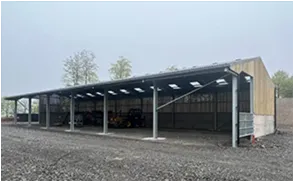- Afrikaans
- Albanian
- Amharic
- Arabic
- Armenian
- Azerbaijani
- Basque
- Belarusian
- Bengali
- Bosnian
- Bulgarian
- Catalan
- Cebuano
- Corsican
- Croatian
- Czech
- Danish
- Dutch
- English
- Esperanto
- Estonian
- Finnish
- French
- Frisian
- Galician
- Georgian
- German
- Greek
- Gujarati
- Haitian Creole
- hausa
- hawaiian
- Hebrew
- Hindi
- Miao
- Hungarian
- Icelandic
- igbo
- Indonesian
- irish
- Italian
- Japanese
- Javanese
- Kannada
- kazakh
- Khmer
- Rwandese
- Korean
- Kurdish
- Kyrgyz
- Lao
- Latin
- Latvian
- Lithuanian
- Luxembourgish
- Macedonian
- Malgashi
- Malay
- Malayalam
- Maltese
- Maori
- Marathi
- Mongolian
- Myanmar
- Nepali
- Norwegian
- Norwegian
- Occitan
- Pashto
- Persian
- Polish
- Portuguese
- Punjabi
- Romanian
- Russian
- Samoan
- Scottish Gaelic
- Serbian
- Sesotho
- Shona
- Sindhi
- Sinhala
- Slovak
- Slovenian
- Somali
- Spanish
- Sundanese
- Swahili
- Swedish
- Tagalog
- Tajik
- Tamil
- Tatar
- Telugu
- Thai
- Turkish
- Turkmen
- Ukrainian
- Urdu
- Uighur
- Uzbek
- Vietnamese
- Welsh
- Bantu
- Yiddish
- Yoruba
- Zulu
Dec . 11, 2024 21:26 Back to list
Light Gauge Steel Frame Structures An Overview
Light gauge steel frame construction has gained significant popularity in the building industry over the past few decades. This method employs thin-walled steel sections that are engineered to provide efficient and effective structural support while maintaining a lightweight profile. Commonly utilized in residential, commercial, and industrial applications, light gauge steel framing offers a range of benefits over traditional building materials such as wood or concrete.
Advantages of Light Gauge Steel Frame Structures
One of the primary advantages of light gauge steel frame structures is their strength-to-weight ratio. Steel is an exceptionally strong material, which allows builders to create durable frames using less material. This not only reduces the overall weight of the structure but also results in lower foundation costs since lighter frames require less substantial footings.
Another significant benefit is the resistance to various environmental challenges. Unlike wood, which is susceptible to rot, termites, and other pests, steel is virtually impervious to these issues. Additionally, it does not warp, shrink, or expand with changes in moisture or temperature, providing a stable and reliable building framework. This durability translates to lower maintenance costs and longer lifespan for the structure.
Furthermore, light gauge steel allows for greater design flexibility. The precision engineering of steel components enables architects and builders to create complex designs and structures that may be difficult or impossible to achieve with other materials. This versatility is particularly beneficial in modern architecture, which often seeks innovative forms that challenge traditional construction methods.
Environmental Considerations
As sustainability becomes increasingly important in construction, light gauge steel framing offers significant environmental benefits. Steel is 100% recyclable, and a large portion of new steel is produced from recycled materials. This feature supports the principles of sustainable building and reduces the environmental impact associated with new construction. Additionally, steel framing can contribute to energy efficiency in buildings. The use of insulated steel panels can help to minimize thermal bridging, ensuring that buildings remain energy-efficient and comfortable throughout the year.
light gauge steel frame structure

Construction Efficiency
The efficiency of construction processes is another notable advantage of light gauge steel framing. The components are manufactured offsite in controlled environments, which allows for precise measurements and reduces waste during the construction phase. The prefabrication of these components means quicker assembly on-site, significantly shortening project timelines. Reduced labor costs and faster project completion can lead to considerable savings for builders and developers.
Moreover, the light nature of steel framing makes it easier and safer to handle during the construction process. Fewer site accidents and injuries can result from the lighter materials, creating a safer work environment for laborers.
Challenges and Considerations
Despite their many advantages, light gauge steel frame structures are not without challenges. One major concern is the issue of corrosion, particularly in environments with high humidity or exposure to saltwater. Proper protective coatings and galvanization processes are essential to enhance the longevity of steel frames and protect them from the elements.
Additionally, light gauge steel framing requires specific design and engineering expertise to ensure the structure can withstand local loads and weather conditions. Construction teams must be familiar with the particularities of working with steel, including connections, fasteners, and thermal performance considerations to avoid potential pitfalls.
Conclusion
In summary, light gauge steel frame structures represent a modern approach to construction, combining efficiency, durability, and sustainability. With their strength-to-weight ratio, resistance to environmental factors, and flexibility in design, they present a compelling alternative to traditional building methods. As the industry continues to evolve, and with increasing attention on sustainable practices, light gauge steel framing is likely to play a pivotal role in the future of construction. The key to maximizing its benefits lies in understanding both the advantages and challenges associated with its use, ensuring that builders can create safe, efficient, and environmentally friendly structures that meet the needs of modern society.
-
How Do Prefabricated Steel Structures Transform Modern Construction?
NewsJul.14,2025
-
How Do Prefabricated Metal Buildings Redefine Modern Construction?
NewsJul.14,2025
-
How Do Prefab Insulated Metal Buildings and Steel Structures Revolutionize Modern Construction?
NewsJul.14,2025
-
How Do Pre - Engineered Steel Structures Redefine Modern Construction?
NewsJul.14,2025
-
Advancing Modular Construction with Prefabricated Metal Structures
NewsJul.14,2025
-
Advancing Industrial Infrastructure with Prefabricated Steel Solutions
NewsJul.14,2025
Products categories
Our Latest News
We have a professional design team and an excellent production and construction team.












